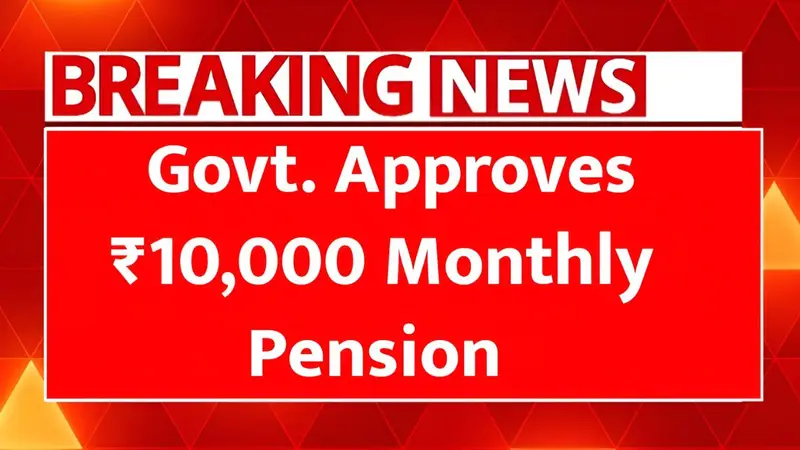₹10,000 Monthly Pension for Pensioners: Understand in Simple Hindi
The government has approved a fixed monthly pension of ₹10,000 for retired employees under the Old Pension Scheme (OPS) from 2025. Its purpose is to provide pensioners with a secure, reliable income amid rising inflation and daily expenses. This decision is being seen as a response to long-standing concerns about the market-based uncertainty of the NPS.
What does OPS provide, what is the difference from NPS?
OPS provides a defined benefit after retirement—a fixed monthly pension. In contrast, the pension in NPS is subject to market fluctuations, so the amount is not fixed. Due to this uncertainty, many pensioners had demanded a stable income like OPS.
What will change with the new decision?
Every eligible retiree will receive a guaranteed pension of ₹10,000 per month. This income will provide support for essential expenses like inflation and medical/housing expenses.
The pension system will once again become simple and predictable—without market risk. The government’s objective is to provide pensioners with the security to live a life with dignity.
Who will benefit?
Primarily retired employees covered under the OPS (generally, central/state government employees who joined service before 2004 and were eligible for OPS).
Many states/institutions may also consider expanding the scope further, but this will depend on financial conditions and policy decisions.
Key benefits for pensioners:
- Fixed monthly income: Easier planning, less stress.
- Partial protection against inflation: Expected revisions/revisions from time to time (as per government guidelines).
- Reduced paperwork: A fixed amount simplifies claims/calculations.
- Confidence: Stable cash flow even after retirement.
Challenges with NPS (summary)
Pension amount depends on market performance—sometimes higher, sometimes lower.
- Low payouts in a falling market impact household budgets.
- Planning is difficult when medical/daily expenses increase.
Financial and Policy Considerations
In the long term, the government will need to balance pension expenditure—such as clear policy on eligibility rules, age, funding model, etc.
This move may impact uniform demand across states/other bodies, so careful implementation is crucial.
What you need to do?
Confirm your pension category (OPS/NPS) and eligibility. Keep an eye on official circulars and dates from the department/pension office.
If documents/bank details need to be updated, complete them in time to avoid delays in payments.
Impact on society and employees
This decision provides mental and financial stability to retired employees. Additionally, it boosts the morale of serving employees by ensuring their basic security after retirement.
Disclaimer:
The information provided above is a simplified overview based on current government announcements. Actual rules, eligibility, and payment terms will be as per official orders/circulars. Please check the details from government sources before making any financial decisions.









